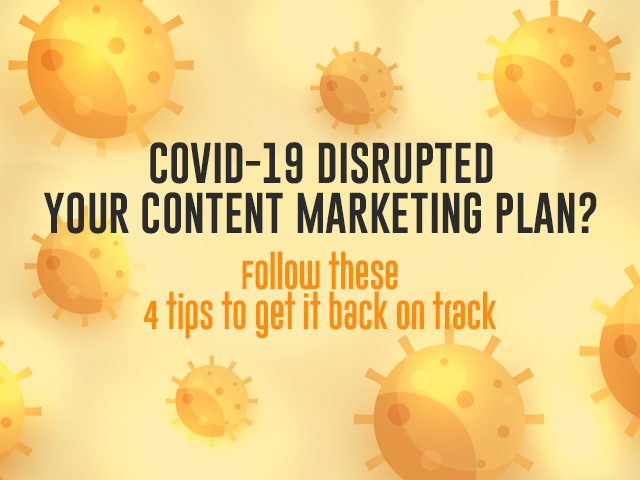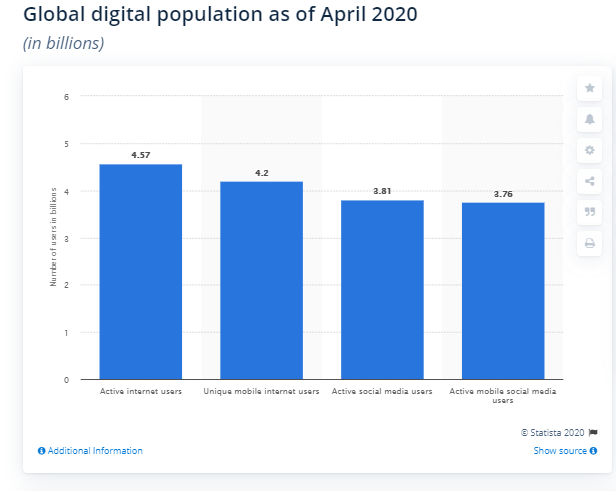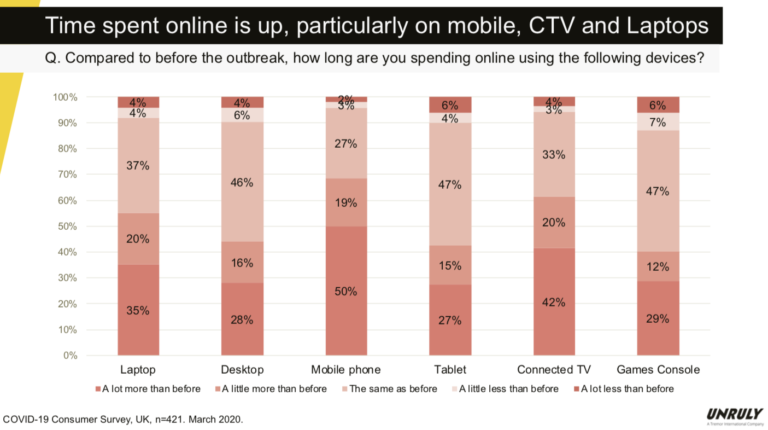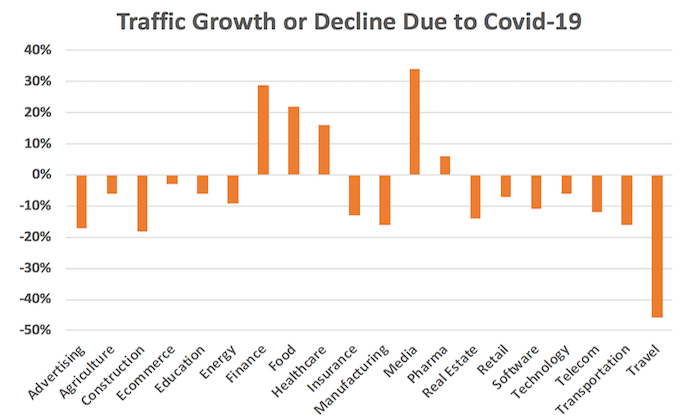
Covid-19 disrupted your content marketing plan? Follow these 4 tips to get it back on track

The year 2020 has been a rough year for businesses. With the ongoing global pandemic, every action, strategy, and plan has been derailed as we are pushed into a world full of uncertainty. Today, most parts of the world are at a standstill, and businesses have halted operations. Marketing has also witnessed a setback.
Today, there is no crowd on the road to look at billboards, no audience in malls for BTL activities. However, people are still using the internet. So, one form of marketing that can still be done is content marketing. After all, with people being asked to stay at home, internet usage has increased.
According to Statista, approximately 4.5 billion people are active on the internet, while 3.81 billion are present on social media. And as per Key Difference Media, 78 percent of users trust brands that offer customized content.

But, content marketing has also been disrupted by COVID-19.
A blog or a campaign that made sense a few months ago might seem irrelevant or insensitive in today’s situation. Your target audience’s behavior has changed, and so have their needs. Now, to get your marketing back on track, you need to revisit your content marketing plan.
Here are tips that can help:
1. Reassess your organizational goals
Your content marketing plan must always reflect your organization’s goal. While generally, such goals don’t change frequently, they should evolve in the face of a global pandemic.
To survive, your brand has to make changes to its business model. Understand what your brand’s vision is for the upcoming few months. Decide what core goals will remain the same and what will change.
The chances are that the leadership of your business has already established the direction your company is now going to take. If so, you just have to follow their lead. If they haven’t, you need to assess it on your own.
To do so, first begin by looking at your products. Has your value proposition changed, or is it the same?
For instance, in the case of Nike, rather than marketing its shoes, the brand has taken another approach. When everyone is stuck at home and hence not able to go to the gym, Nike has made the subscription to its fitness app “Nike Training” free.
So, you should see if your product truly has the same demand or if you also need to shift your focus to something else. The content you create will then reflect your new priorities and focus.
2. Revisit your target audience
It is impossible to create impactful content unless you know who your target audience is. And no, this doesn’t just mean knowing their age and gender. Instead, it is the overall understanding of your target audience.
You must also dive deep into their behavior, needs, and interests. Learn where they are, their daily routine, what they like and dislike, their aspirations and interests, etc.
One of the reasons why your content marketing plan might have gotten disrupted is because consumer behavior has changed drastically during these uncertain times.

For starters, now everyone is restricted to their homes. So, their routine has witnessed a significant change. As job cuts and unemployment is increasing, the worries and aspirations of a consumer are also changing. Rather than buying leisure items, people are sticking to essential items only.
To create content that truly helps in pushing your brand forward, you need to revisit the demographics of your target audience. Map out an ideal buyer of 2020. And then alter your proposition and content marketing objectives accordingly.
3. Be helpful
One thing is for sure. As more people are stuck inside their homes, they are bound to use Google for searches even more. But, their search patterns will change.
Let’s say you have optimized your content for a given set of local keywords like “leather jacket shop near you,” or “best shoe shop in NYC.” Now that shops are closed, and people are at home, they are not likely to search for such items.

Instead, they are more likely to search regarding COVID-19 – how to cope with it, how to do the workout at home, cooking recipes, or anything related to working or staying at home.
Before the pandemic, your website might have featured the best SEO content, and rankings of your webpages may have been among the top results. But after the pandemic, the situation has changed for many businesses. It is because the pandemic has transformed the search preferences of people
They are not searching for the same thing they were looking for before the pandemic. For example, if someone was planning to buy an expensive pair of sneakers before the pandemic, that person may have shelved the idea for now as the situation has changed.
So, to ensure that people don’t forget your brand during quarantine, it is imperative that you stay relevant and helpful. Show people the content that can help them through this tough time. Give them advice, make life easier for them.
However, the key is not to spread misinformation or panic. Instead, work within your area of expertise. For instance, let’s say you are in the apparel sector. You can write a blog about work from home outfits and fashion.
4. Decide on your content format and distribution channels
There are various ways one can distribute content. You can do so via your website blog, social media pages, physical marketing collateral, activations, podcasts and ads, online videos, etc.
Some of these methods won’t work in today’s landscape. So, you must tweak your existing distribution channels and content format accordingly.
See how the consumption of media has changed for your target audience. For instance, as social media usage has increased, diverting your content to the platform is a good idea. Similarly, brand emails might be getting ignored as fewer people open their emails, to begin with, rendering the platform ineffective.
Once you have decided what you want to post and where you want to do it, you can market your business effectively. You can add call-to-action in your content, not necessarily asking users to make a purchase, but just to subscribe to your newsletter. Make sure your call-to-action is aligned with your organizational goal.
Show them that your brand cares for its customer and is not merely exploiting the crisis to earn a profit.
Ending Remarks: It is time to get back on track
Yes, COVID-19 has changed the world for the worse. But, it doesn’t mean you don’t have control over your business and plan. It is time to make some changes to your strategies to get your content marketing plan back on track.
Mary Warner is an enthusiast blogger. Her compelling research and communication capabilities exchange offerings that have value for the reader. Her passion for writing has been an ever-evolving affair. She loves to share her views related to latest trends in marketing, technology, ecommerce, and the like.
what do you think?